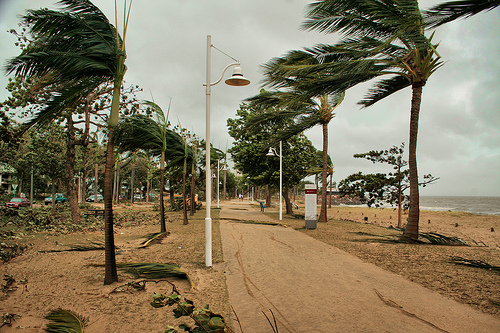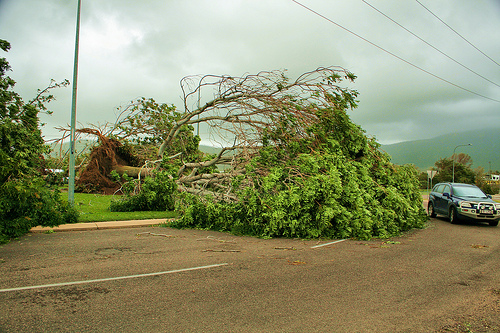Natural Disasters and University Disruptions
Posted by Linda, on 6 February 2011
Natural disasters can be powerfully destructive forces. At the very least, they have a habit of interrupting our lives and work. Damage varies depending on the intensity of nature’s fury and how prepared a city (or institution) is for a particular emergency. This can also influence how challenging recovery will be, in the aftermath.
The University Queensland was fortunate in many ways after the Southern Queensland floods, during which 3/4 of the state was submerged. Its St. Lucia campus lay next to the Brisbane River, but it only experienced low-level flooding, and so a handful of buildings were affected. Most escaped damaged. Partly this came from a lesson learned in 1974, the last time the university had experienced intense flooding (levels of up to 6.7 meters. this time water levels rose to about 4-5 meters). Since then, new buildings were predominantly established on higher ground. Post flooding, clean up crews were able to clear the debris and the university re-opened within days.
 About 3 weeks later, Cyclone Yasi, category 5 (highest level there is, with gale force winds of up to 285 km/hr) hit Northern Queensland. Major cities in that region include Cairns and Townsville. The damage has been extensive according to recent news reports, with uproot trees, property damage, beached boats etc. Now, thousands are currently without power. However, as cities were well prepared and properly evacuated, the death toll remains at one.
About 3 weeks later, Cyclone Yasi, category 5 (highest level there is, with gale force winds of up to 285 km/hr) hit Northern Queensland. Major cities in that region include Cairns and Townsville. The damage has been extensive according to recent news reports, with uproot trees, property damage, beached boats etc. Now, thousands are currently without power. However, as cities were well prepared and properly evacuated, the death toll remains at one.
(Images from Flickr CC, by robandstephaustralia)
 James Cook University (JCU), world renown for environmental research, closed its campuses at Townsville and Cairns on the morning of Feb. 2 in anticipation of the cyclone. Over 12 hours later, Yasi hit in the wee hours of Feb. 3. Clean up has been taking place, with the university set to re-open its campuses on Monday, Feb. 7. Many universities, like JCU, has a list of emergency procedures to take, in the event of a disaster or other threats to campus and students. It has a website informing staff and students on how the university responds.
James Cook University (JCU), world renown for environmental research, closed its campuses at Townsville and Cairns on the morning of Feb. 2 in anticipation of the cyclone. Over 12 hours later, Yasi hit in the wee hours of Feb. 3. Clean up has been taking place, with the university set to re-open its campuses on Monday, Feb. 7. Many universities, like JCU, has a list of emergency procedures to take, in the event of a disaster or other threats to campus and students. It has a website informing staff and students on how the university responds.
This includes appointing an emergency controller who will relay messages to staff, arrange any special measures for protecting equipment etc. Another page lists off how to ensure personal safety. As cyclones affect Queensland every year, it’s recommended steps can be quite detailed. i.e. During a storm, it may be necessary to shut off power and wear hardy clothing.
In a previous post on UQ and the Flood, Pablo Astudillo commented that Chile’s universities experienced an Earthquake, 8.8 on the richter scale (last year in Feb. 2010), followed by a tsunami and possibly some fires. Perhaps the only thing invariably worse than one natural disaster, is two or several in a row.
So, for any of you reading this, what kind of natural disruptions have you experienced? And how has this affected your research? Click here for a short survey.


 (2 votes)
(2 votes)